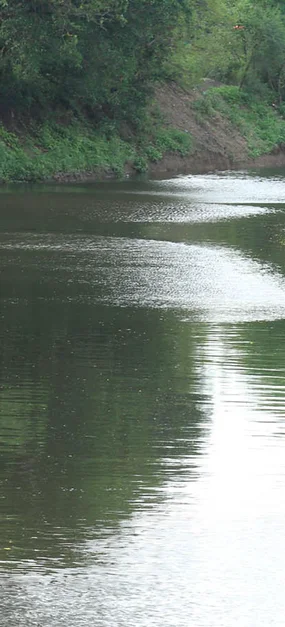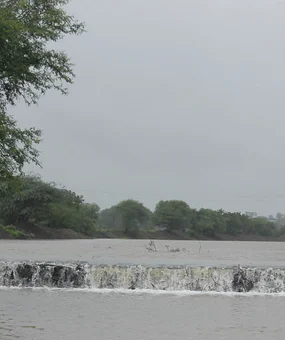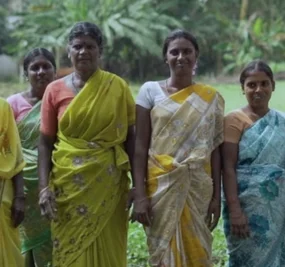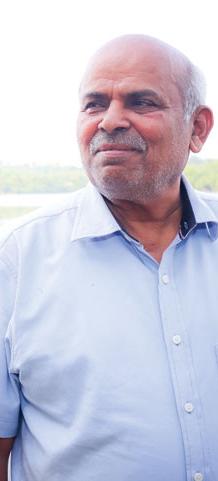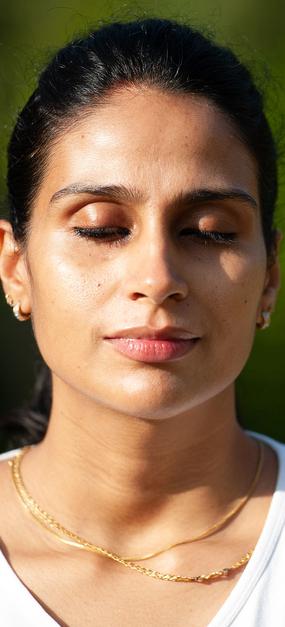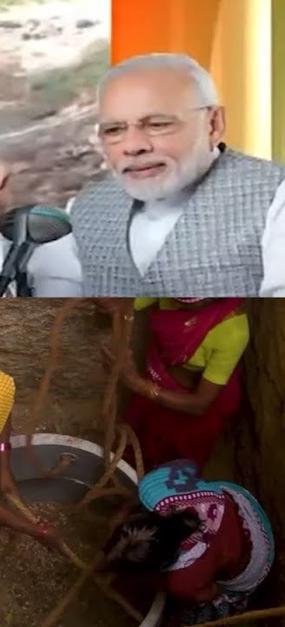Did you know that a river rejuvenation movement in India has brought water to more than 7 million people in rural India? In a span of nine years, this movement has touched 49 rivers. Rivers that have been dry for decades are flowing again! Here are eight moments of one of the largest river rejuvenation movements that will bring a smile to your face.
1. A scientist attended his calling after retirement
As the Head of the Geomatics Center of Water Resources, Dr. Lingaraju Yale and his team had revived a 60 km square streamlet. Excited, he presented his ideas to revive major water bodies to other institutes. But nobody supported his ideas. After retirement, he penned a book encapsulating his ideas to revive Kumudvathi, a river that was dry for the past 50 years.
At the end of his book inauguration, he met a team of volunteers from The Art of Living who wanted to work with him to revive Kumudvathi. The year was 2013. 6 years later, the river for the first time rose to 63 feet. It is now meeting 60% of the water requirements of Bengaluru city.
2. Drought-hit Latur became tanker-free
In 2013, several districts in Maharashtra including Latur were severely hit by drought. Tankers were their only means of survival. That is when The Art of Living’s Jal Jagruti Abhiyan stepped in. The project aimed to conserve water by mass-sensitization and river rejuvenation activity. After eight years, the dry Manjara river that ran through Latur was no longer dry. It brought water sufficiency to places that were technically drought zones! Latur is now tanker-free.
3. Farmers learned drought-resistant farming
Under the Jal Jagruti Abhiyan, farmers in Latur and other drought-hit districts of Maharashtra learned water-conservation techniques and drought-resistant natural farming and replaced chemical farming with it. Result? Farmers who were about to quit their trade made huge profits despite drought conditions.
“I never thought that I could increase my earnings by growing trees on my farm. Yet this happened at a time when regular crops at other farms were failing to give yield because of drought. With an input cost of Rs. 5,000, I was able to earn Rs. 3.6 lakhs within 7 months.” – Mangala Pandge, A farmer in Latur
4. Satellites used to revive rivers
When retired ISRO scientist, Dr. Lingaraju Yale and his team of volunteers at The Art of Living started work on reviving the Kumudvathi river in 2013, the team used satellites to revive the river. In other words, they used geospatial technology to track the location of dry aquifers (a body of permeable rock which can contain or transmit groundwater). Since when that is located, the team knows where to dig and build recharge structures that help to fill the dry aquifers. Since then, satellite technology has been used to revive several other rivers under the same project.
In 2019, The Art of Living was conferred the International Geospatial Excellence Award for the best use of geospatial technology.
5. 20,000 women revived a Tamil Nadu river
Women of Kammavanpettai village in Tamil Nadu were once in despair. Their source of water: the Naganadhi river was almost dry for the past 20 years. Husbands were addicted to alcohol and unmotivated to work. There was economic insecurity with no steady income and children to feed.
At such a time, they found the mentorship they needed in Chandrasekhar Kuppan, the Director of The Art of Living’s River Rejuvenation project to revive the Naganadhi river. There were people who thought the women could not do it. But they proved them wrong, not only did they make their village water-sufficient but they also inspired other women to join the movement. Finally, 20,000 women worked to revive Naganadhi!
The success of this particular river rejuvenation project got district officers from all over Tamil Nadu to request a similar project for the dry rivers in their districts.
6. A man with crutches led the way to build rainwater harvesting structures
Since 2012, every morning from 6 am to 10 am, Abhay Todkar would drive to the villages in Man Taluka in Maharashtra. Nothing deters him. Not even his disabled left limb and limited strength in his right limb. Simply because he was on a mission to mobilise villagers into action against water scarcity.
His morning routine paid off when 650 villagers in Man Taluka, Satara, Maharashtra built a gabion dam, deep contour trenches in 45 days to make water storable and harness rainwater naturally. The result? The taluka which was once hit with drought now has a water storage capacity of 25 crore liters!
7. 6.1 million trees planted to revive 47 rivers
Did you know that trees play a major role in reviving rivers? They make the soil porous enough to allow rainwater to seep through and reach the dry aquifers of a river. The roots of trees guide the water into the soil, helping in the rejuvenation process. The Art of Living has planted 6.1 million trees to revive 47 rivers.
8. Secured a place in the Limca Book of Records
In 2018, for the first time, a river rejuvenation movement found a place in the Limca Book of Records. The Art of Living was recognized for the most extensive river rejuvenation work by an NGO. At that time, The Art of Living was working to revive 40 rivers.



